15 Major Companies That Started Out as Mom-and-Pop Shops
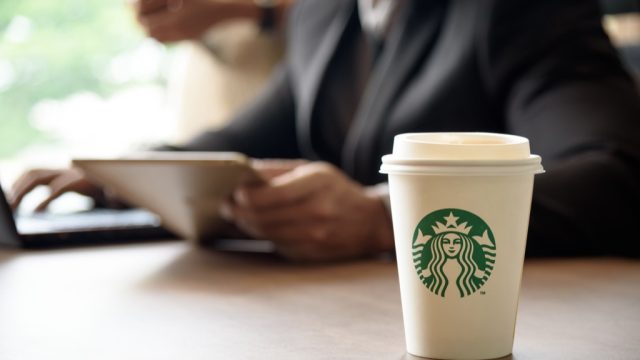
Many of the nation’s biggest companies began as small, entrepreneurial ventures. Take McDonald’s, for example. Whether you’re running errands in your hometown or traveling pretty much anywhere in the world, it’s likely you’ll come across those glistening golden arches. After all, there are 36,000 McDonald’s in more than 100 countries around the world! Not what you typically picture when you hear the term “mom-and-pop shop,” right? But McDonald’s wasn’t always such a pervasive fast-food institution. Brothers Dick and Mac McDonald opened the first-ever McDonald’s—a drive-in in San Bernardino, California—in 1940. It wasn’t until opportunistic milkshake salesman Ray Kroc stepped in in 1954 to become their official franchise agent that McDonald’s restaurants started popping up elsewhere. The rest, as they say, is history—delicious, greasy history.
While the origin story of McDonald’s is a quintessential American business tale, it’s hardly the only one of its kind. Here are 15 more huge companies that began as mom-and-pop shops, each of which had to face long odds on Main Street before earning big bucks on Wall Street.
1
Walmart
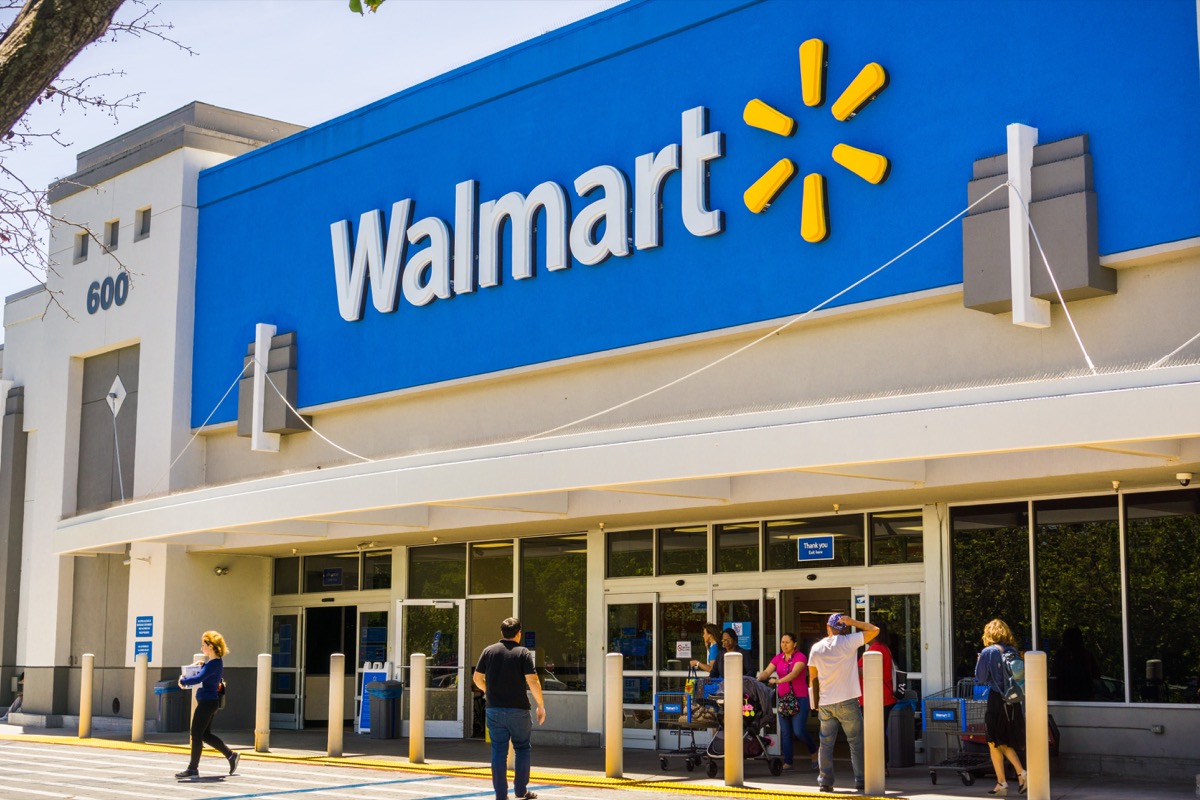
Walmart is the world’s largest retailer. But before it was the retail juggernaut we know today, it was a humble five-and-dime. Walmart’s origins date back to 1950, when founder Sam Walton opened Walton’s 5&10 in Bentonville, Arkansas. It was Walton’s second general store, but the first to bear his name. Motivated by that store’s success, Walton decided to open his first Walmart in 1962 in nearby Rogers, Arkansas. The company—built on the promise of lower prices and better service—went public in 1970 and has been growing ever since. Today, 90 percent of the U.S. population lives within 10 miles of a Walmart. Sales have experienced a similar trajectory, skyrocketing from just $75,000 in 1951 to $514.4 billion in 2019.
2
Whole Foods Market

Before Whole Foods Market became the Cadillac of grocery stores, it more closely resembled a humble Chevy. It all started in 1978, when 25-year-old college dropout John Mackey and his girlfriend, Renee Lawson, borrowed $45,000 from friends and relatives to open SaferWay, a small natural foods store in Austin, Texas. Space was so limited that the couple had to store extra inventory in their apartment, which led to them being evicted. After that, they had to move into the store itself, and bathe with a water hose attached to their commercial dishwasher.
Two years later, they merged SaferWay with Clarksville Natural Grocery, which was owned by business partners Craig Weller and Mark Skiles. The new joint venture, Whole Foods Market, opened its first store on Sept. 20, 1980. That original location was 10,500 square feet and employed 19 workers—a far cry from what the brand has become. Today, Whole Foods has 95,000 employees and 509 stores in three countries, each of which is an average of 40,000 square feet. Grocery store? More like grocery empire.
3
Starbucks
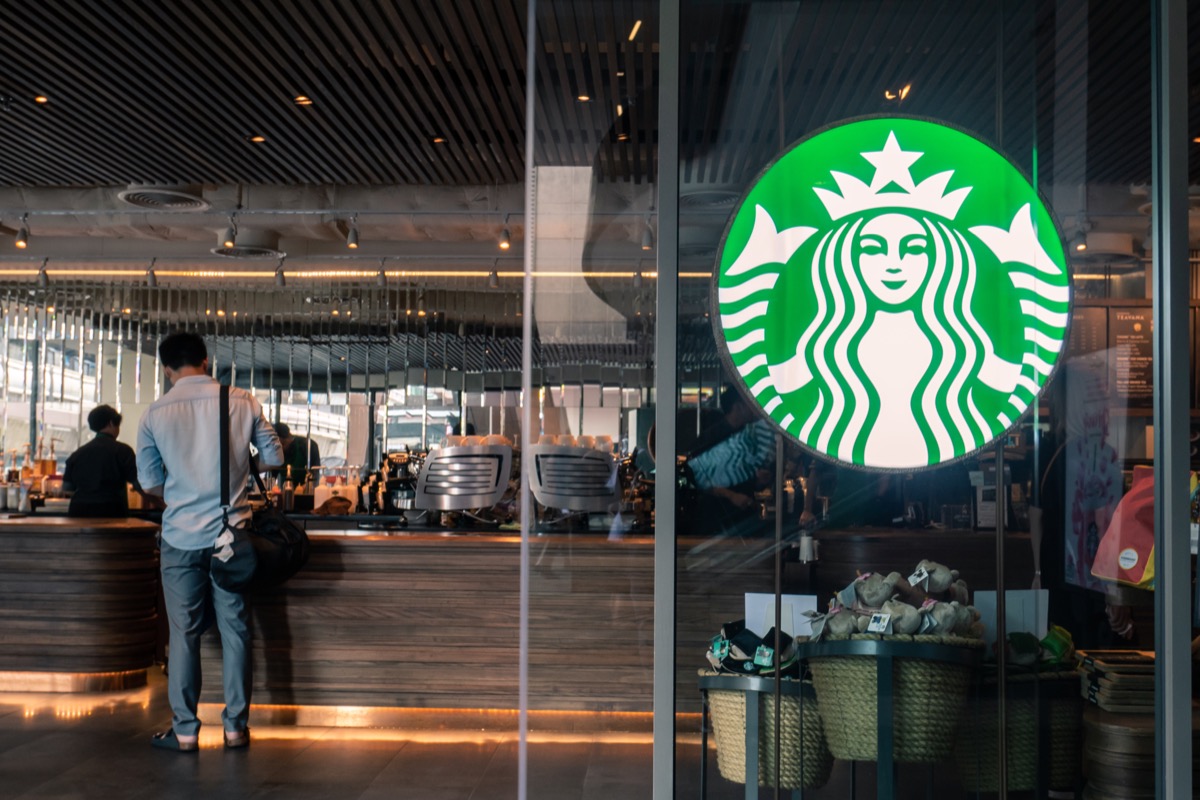
The first Starbucks opened in 1971 in Seattle, where it sold fresh-brewed whole-bean coffees from a single narrow storefront in the city’s historic Pike Place Market. A decade later, future chairman and CEO Howard Schultz became a loyal customer. He liked the company so much that he joined it as director of retail operations and marketing in 1982, the same year that Starbucks began providing coffee to local restaurants and espresso bars.
After visiting Italy in 1983, Schultz wanted to bring Italian espresso-bar culture to the U.S., and in 1984, he convinced Starbucks’ founders to open an Italian-style coffeehouse in downtown Seattle. A year later, Schultz struck out on his own and founded Il Giornale, a small chain of retail coffee shops that brewed coffee and espresso beverages made from Starbucks coffee beans. In 1987, Il Giornale acquired Starbucks and changed its name to Starbucks Corp. At that point, there were 17 Starbucks stores. More than 30 years later, there are 30,000 of them.
4
Ben & Jerry’s
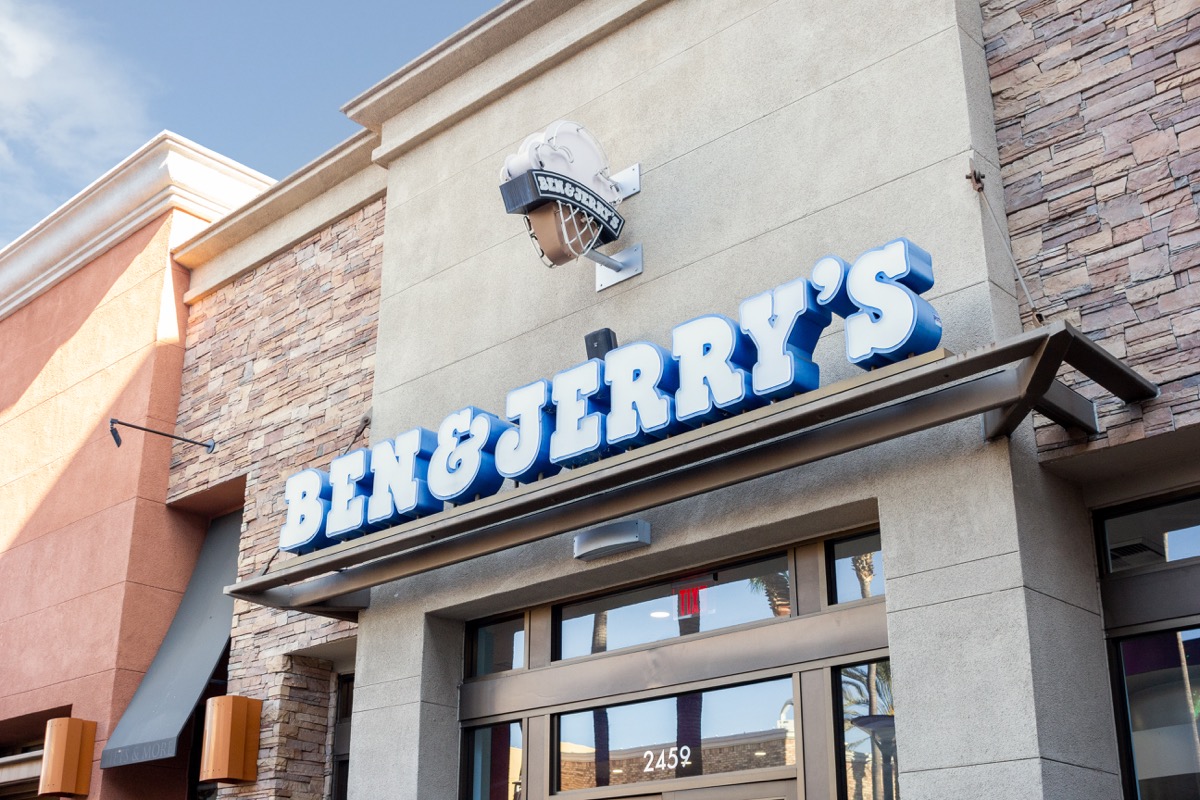
Half Baked? Chunky Monkey? Cherry Garcia? Whatever your favorite flavor of Ben & Jerry’s ice cream may be, you owe its existence to best friends Ben Cohen and Jerry Greenfield, who opened their first ice cream scoop shop in 1978 inside a renovated gas station in Burlington, Vermont. They had hardly any money (just $8,000 in cash and a $4,000 bank loan) and even less experience (a $5 correspondence course in ice cream making from Penn State).
And while it may sound like a recipe for a bad business plan, it was a step up of sorts: Cohen, an artist, made pottery that no one was buying, and Greenfield wanted to be a doctor, but failed to get into medical school. So, they agreed to open up a shop together. Initially, the plan was to sell bagels. When bagel-making equipment proved to be too expensive, however, they set their sights on ice cream, which they began packaging in pints to sell at local grocery stores in 1980. Forty years later, the company produces up to 400 pints of ice cream per minute.
5
Nike
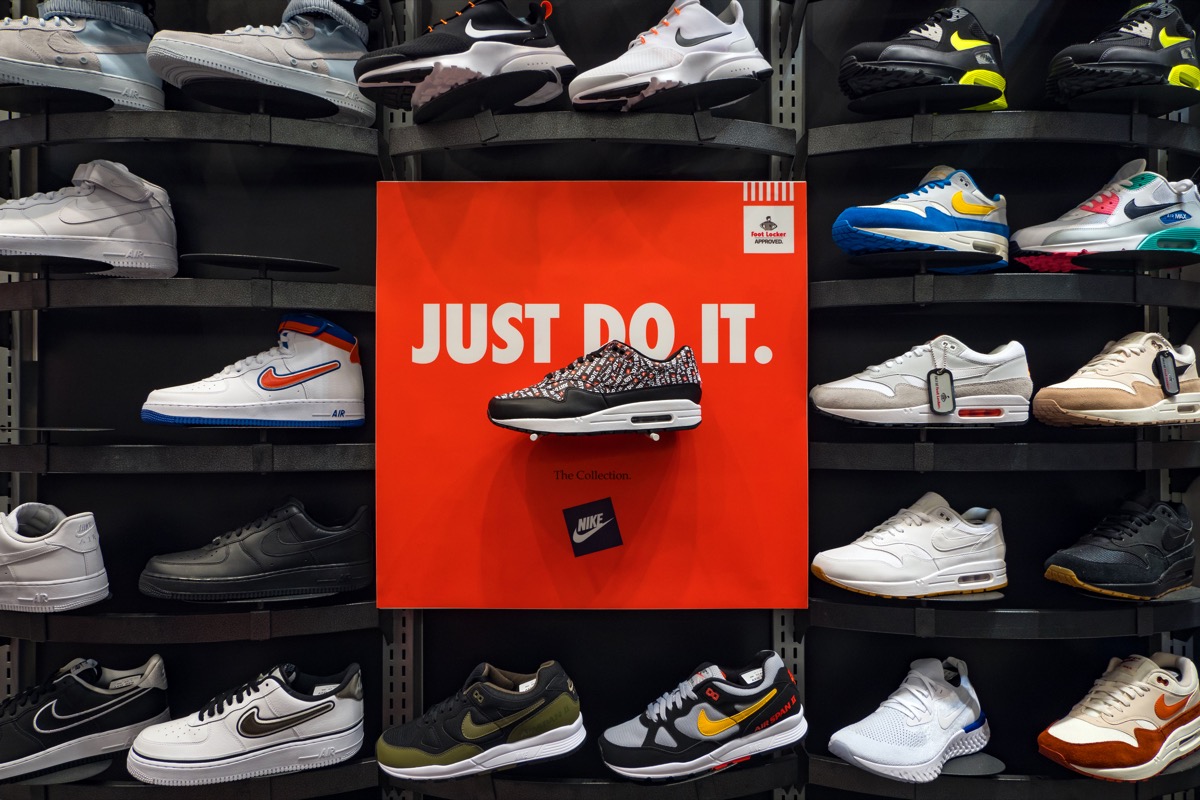
In business, name recognition is everything. Some brands are so ubiquitous, however, that you don’t even need a name to recognize them—all you need is a logo, like Nike’s iconic swoosh that makes it one of the most recognized companies in modern culture.
Sure, today, everyone knows Nike. But in 1964, no one did. That’s when University of Portland track-and-field coach Bill Bowerman partnered with Phil Knight, a former mid-distance runner on his track and field team, to establish Blue Ribbon Sports. Since the 1950s, Bowerman had been searching for an alternative to traditional, German-made running shoes, which he believed hindered runners’ performance because of their weight and the materials used to make them. When he began developing his own shoes, his first guinea pig was Knight, who was looking for a post-college career that allowed him to still pursue his passion for athletics. After he learned about Japanese running shoes, which he found to be superior to the ones made in Germany, Knight convinced the shoe manufacturer Onitsuka Tiger to export its products to the United States, and grant him the exclusive rights to sell them. Each investing $500, Knight and Bowerman subsequently started Blue Ribbon Sports to import the Japanese sneakers, which they sold in Portland from the trunk of Knight’s car.
The kicks were a hit and the business grew. But then, Onitsuka Tiger began questioning the deal. Knight and Bowerman therefore decided to start making and selling their own shoes using Bowerman’s designs. They called the new venture—incorporated in 1971—Nike. Nearly half a century later, the company reported 2018 global revenues of $36.4 billion—not bad for two guys shilling sneakers from their car.
6
Eileen Fisher
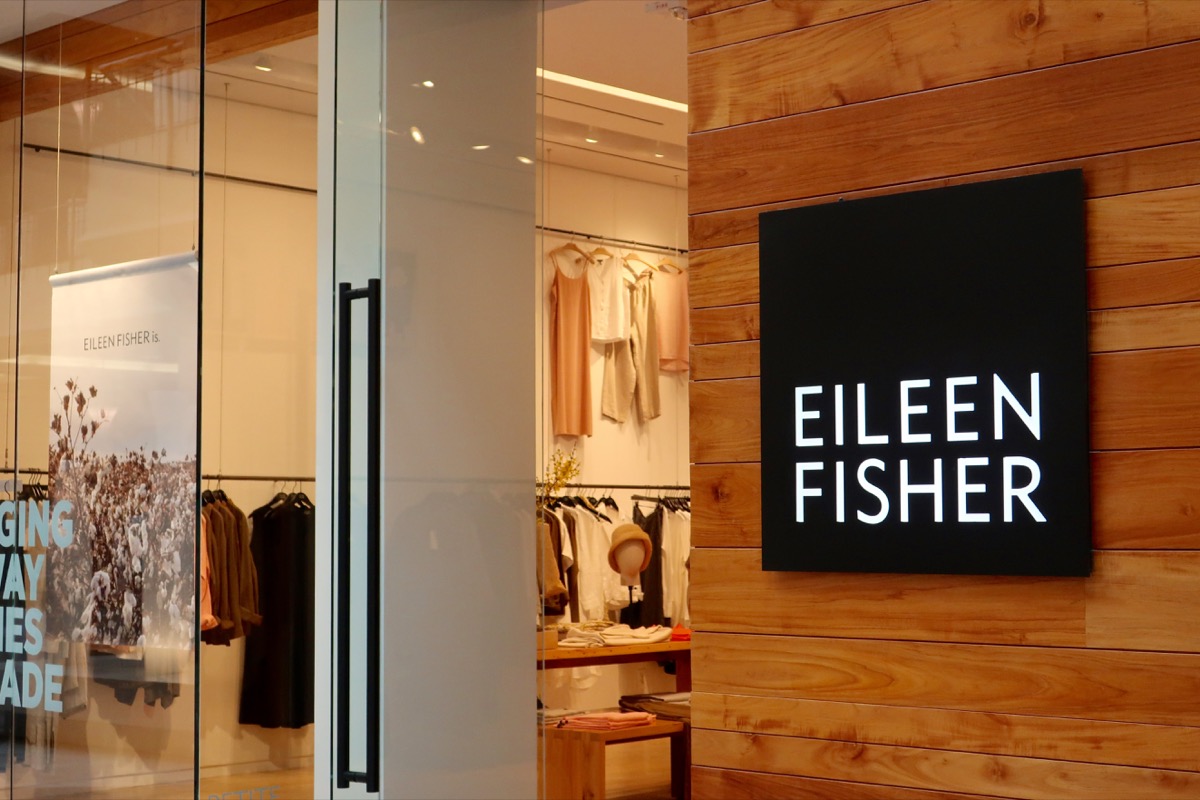
Fashion designer Eileen Fisher makes simple, uncomplicated clothing. It should come as no surprise, then, that her eponymous fashion brand, Eileen Fisher Inc., has a simple, uncomplicated origin story. It was 1984, and Fisher was working as an interior and graphic designer in New York City—and she hated getting dressed for work. What she needed was a basics-based wardrobe that was comfortable, timeless and effortless—so, she decided to make one.
Even though she couldn’t sew and only had $350 in the bank, she managed, with the help of friends, to produce four samples that she took to a fashion trade show. She received $3,000 in orders, expanded her line to eight pieces, and attended a second show where she sold $40,000 worth of merchandise. An idea borne out of necessity suddenly became a business. Today, Eileen Fisher boasts $429 million in annual revenue. Clearly, she filled a hole in the market.
7
Mattel
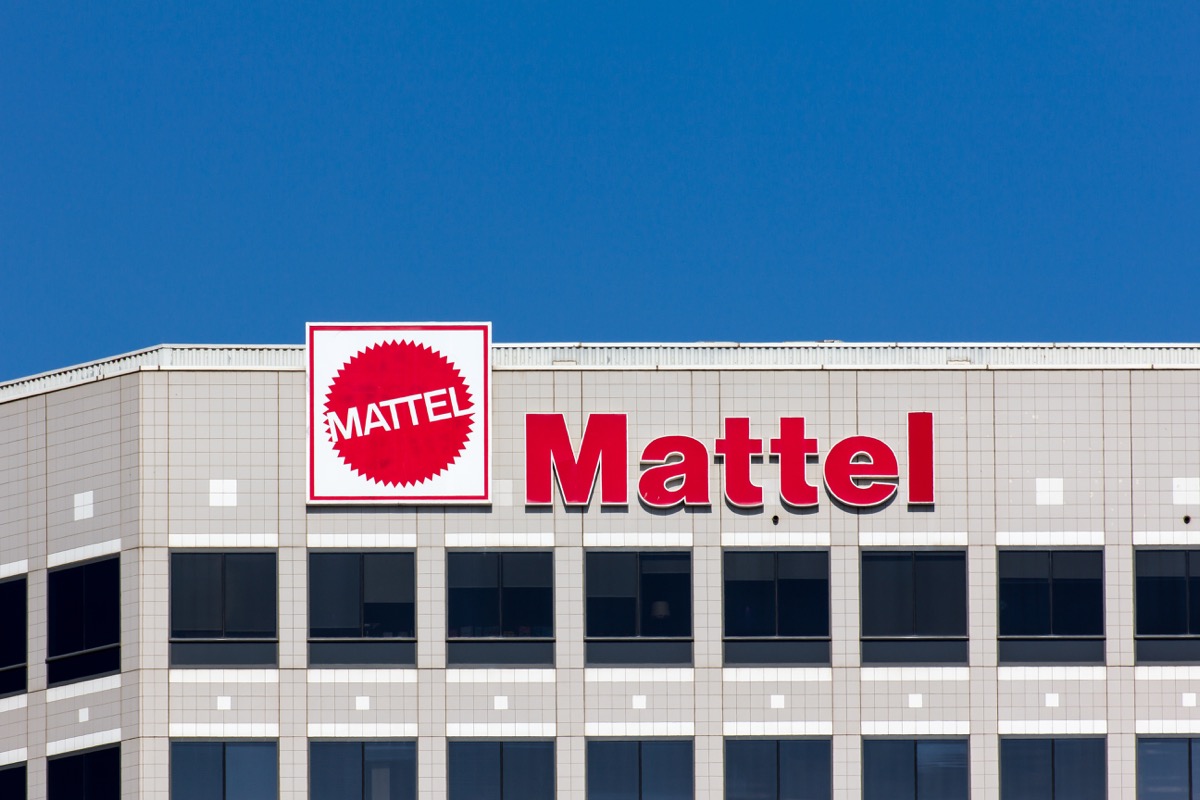
Anyone who has a child, knows a child, or once was a child has probably played with something that was made by toy titan Mattel, the playful force behind American Girl, Barbie, Fisher-Price, Hot Wheels, Thomas & Friends, and more. Although the company now sells its products in more than 150 countries, it started out where so many startups do: in a garage.
Co-founder Elliott Handler had a business making jewelry out of Lucite, or Plexiglas. When the U.S. entered World War II, however, Lucite became a restricted material that was reserved for military use only. He and his wife, Ruth Handler, therefore partnered with a friend, Harold “Matt” Matson, to start a new business making picture frames out of wood and flock. Handler designed them and then Matson manufactured them in his garage. They called the venture Mattel—a hybrid of “Matt” and “Elliott.”
After establishing the company in 1945, Handler began using wood scraps from those picture frames to make dollhouse furniture. Soon thereafter, Matson sold his share of the company to Handler, and Mattel began focusing exclusively on dollhouse furniture and other toys. Then, in 1959, while watching her daughter play with paper dolls, Ruth had the idea to create a three-dimensional doll through which girls could imagine their future selves. She named the doll “Barbie” after her daughter, Barbara. Mattel went public the next year, and by 1965, its sales exceeded $100 million, officially launching the company into the Fortune 500.
8
Yankee Candle Co.

The Yankee Candle Co.’s origin story is as sweet as the company’s trademark candles. It began in 1969, when 16-year-old Mike Kittredge fashioned a homemade Christmas gift for his mother out of canning wax, melted red crayons, kitchen string, and a milk carton. When a neighbor saw the candle, she convinced Kittredge to sell it to her instead. He used the money to buy enough wax to make two more candles: one to give to his mom, the other to sell. And so, Yankee Candle was born. In 1973, the company had 12 employees, and by 1983, annual sales reached $1 million. Today, the company makes more than 200 million candles per year and generates over $1 billion in sales. We can only imagine how proud Kittredge’s mom was.
9
Burt’s Bees
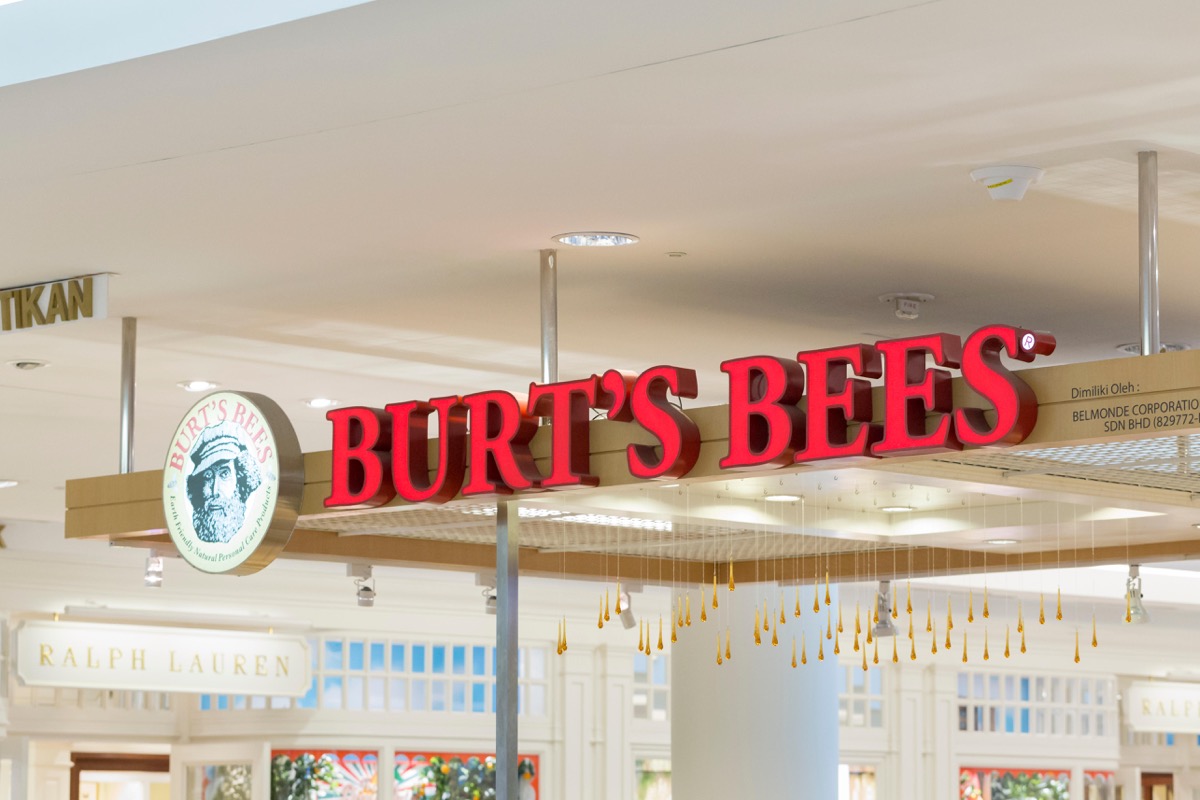
The skincare world has been buzzing about Burt’s Bees for decades. But before the company was beloved for its all-natural lip balms, lotions, and cosmetics, it was known for its candles.
While hitchhiking to get home in rural Maine in 1984, artist Roxanne Quimby saw a yellow Datsun pickup truck pull over beside her. She recognized the driver—and his signature bushy beard—instantly: It was Burt Shavitz, an eccentric local beekeeper who was well known in the area not only for his facial hair, but also for his roadside honey stand. Quimby and Shavitz became fast friends and soon embarked on a joint business venture selling candles Quimby made with unused wax from Shavitz’s beehives. They made $200 selling the candles at their first craft fair, and $20,000 in their first year in business. In the early 1990s, the company began selling lip balm and permanently shifted its focus to health and beauty products shortly thereafter. Then, Shavitz made a controversial exit from his namesake company, and in 2007, Quimby sold it to consumer products giant Clorox for $925 million. Shavitz died at the age of 80 in 2015, but his legacy still lives on as the symbol of Burt’s Bees today.
10
SoulCycle
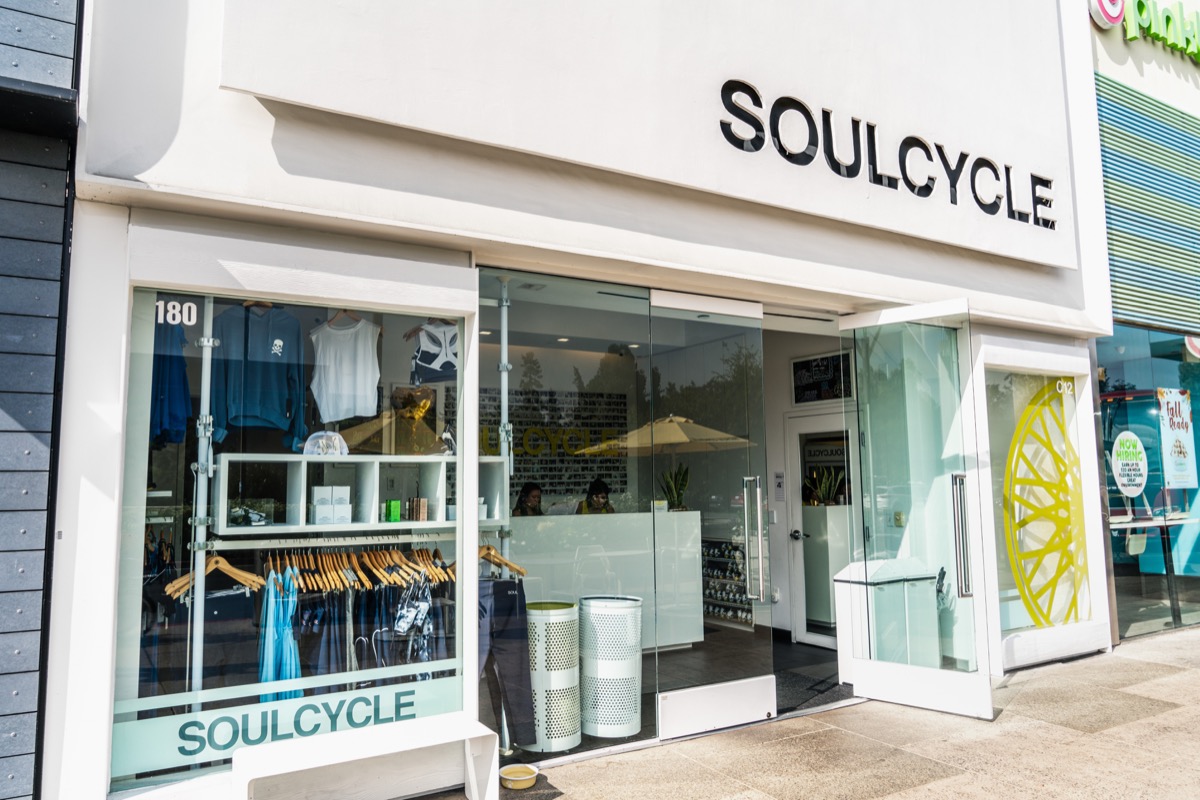
SoulCycle operates a fitness empire of nearly 100 indoor cycling studios. The company’s 45-minute cycling classes—which take place inside dark rooms with high-energy music and zealous instructors—have a cult-like following. But before it became an elite fitness brand, it was merely an idea of two likeminded people. Co-founders Elizabeth Cutler and Julie Rice met in 2006 on a sort of business blind date. Both of them were searching for a new kind of fitness class, so a mutual friend introduced them. They had lunch, discussed their desire for a fitness studio based on fun and community, and then got to work bringing their shared vision to life.
Cutler and Rice found their first location—an old dance studio in New York City with no external signage—on Craigslist. They advertised to passers-by using a yellow rickshaw parked outside (hence the company’s now famous logo). A year later, classes were full of fitness fanatics and celebrities like Kelly Ripa, Lena Dunham, Lady Gaga, Bradley Cooper, and even Beyoncé. Cutler and Rice began opening more studios in and around New York, and in 2011, they sold a majority stake in the company to fitness giant Equinox, which bought out SoulCycle’s founders in 2016 for $90 million apiece.
11
Five Guys
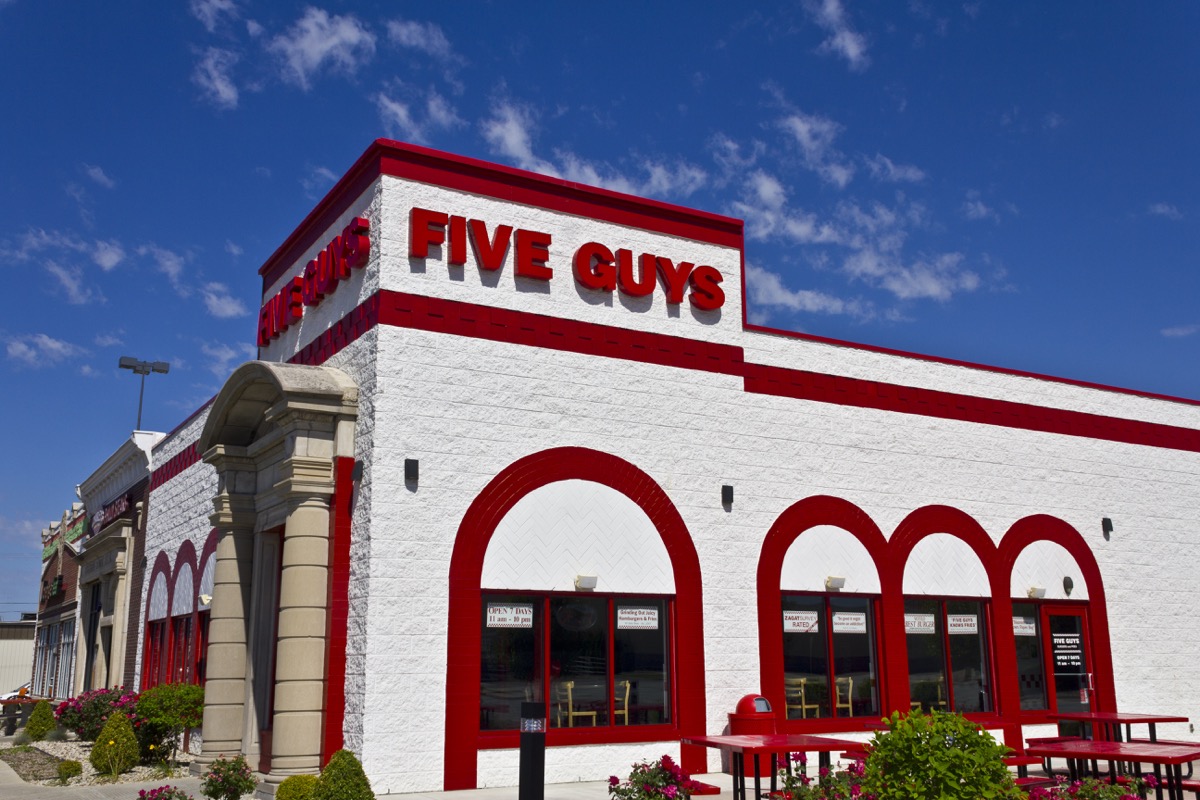
In 2018, America named Five Guys its favorite burger—ahead of McDonald’s, Burger King, Wendy’s, Sonic, White Castle, In-N-Out Burger, and 10 other major burger brands. But Five Guys didn’t top that list over night. It took lots of work—and lots of beef. The first Five Guys opened in 1986 in a strip mall in Arlington, Virginia. Founders Jerry and Janie Murrell named it for Jerry and the couple’s four sons—the original “five guys,” before the Murrells had a fifth son. When the two eldest boys graduated high school, but didn’t want to go to college, Murrell made them a deal: Instead of tuition, their college savings would be used to open a hamburger shop for the two of them to run. The restaurant, which is known for its hand-formed patties, fresh-cut fries, and myriad toppings, opened five more locations between 1986 and 2001 before it began franchising. Now it has more than 1,500 locations across the globe.
12
Dell
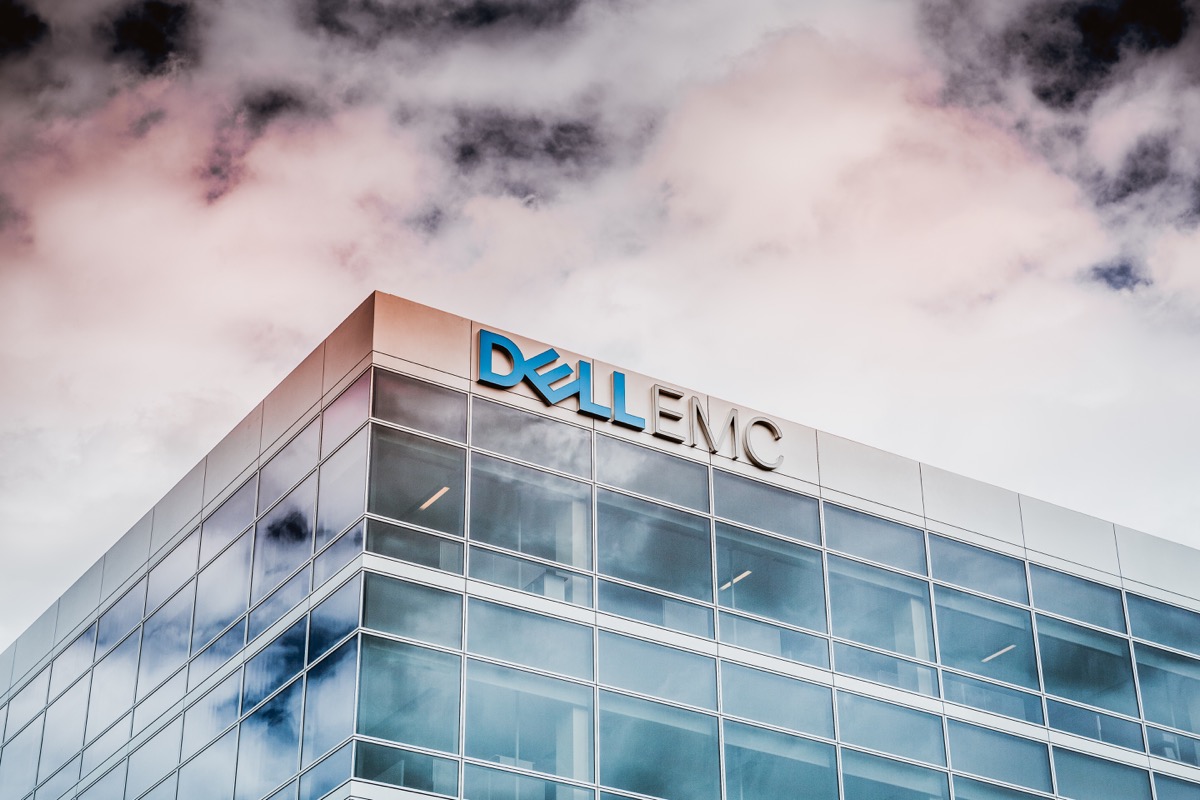
What happens in dorm rooms is usually unremarkable: sleeping, studying, video games, and maybe a little bit of partying. What happened in the dorm room of pre-med student Michael Dell, however, was a major exception. Dell had always been interested in technology, so much so that when he was 15 years old, he purchased an Apple computer just so he could take it apart to see how it worked. And in 1984, as a freshman at the University of Texas at Austin, he used $1,000 from his savings to establish PC’s Limited, a business that he ran right from his dorm room, where he hand-built personal computers to sell to his peers.
Dell wanted to do what no one else at that time was doing: Sell computers directly to consumers at prices they could afford. When off-campus customers began purchasing his machines, too, he dropped out of school to focus on his business full-time. The company did $6 million in sales during its first year and went public just four years later under the name Dell Computer Corp. By 2001, Dell was the world’s largest PC maker. Nearly two decades later, the company now known as Dell Technologies brings in over $36 billion of revenue annually, proving that many dudes have gotten Dells.
13
Virgin Group
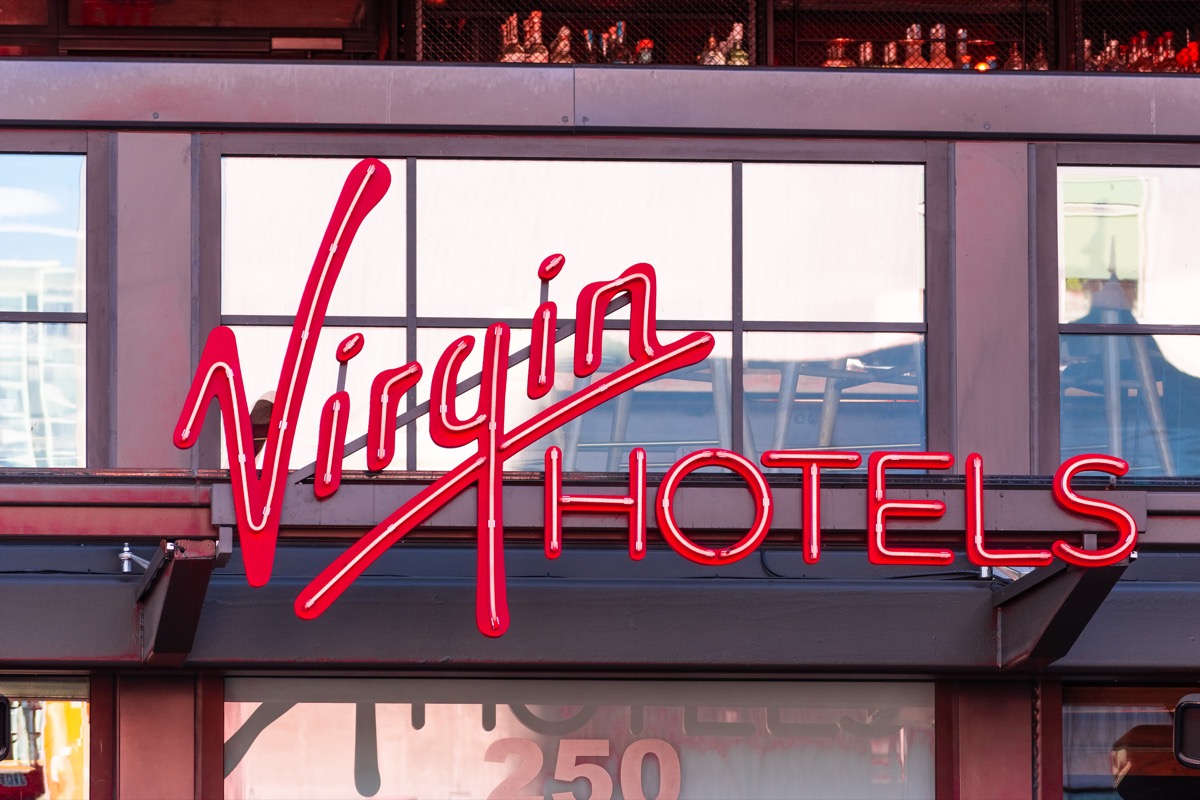
British business mogul Sir Richard Branson is worth an estimated $4 billion. His multinational holding company, Virgin Group, encompasses more than 60 subsidiaries, including an airline (Virgin Atlantic), a chain of hotels (Virgin Hotels), a high-speed rail venture (Virgin Hyperloop One), a wireless communications company (Virgin Mobile), a cruise line (Virgin Voyages), and even a space tourism outfit (Virgin Galactic). What started it all, however, was a modest retail business that Branson established in 1970, selling records via mail order. That business, Virgin Records, soon spawned a small record shop in London, which became a recording studio and a record label that eventually signed acts like the Sex Pistols and The Rolling Stones. In 1984, Branson started Virgin Atlantic, and the Virgin brand took off from there—literally.
14
FUBU

Before he was an investor on the hit TV show Shark Tank, businessman Daymond John co-founded one of the most recognizable clothing brands of the modern era: hip-hop apparel company FUBU. John conceived the brand—an acronym of “For Us, By Us”—while he was working as a server at Red Lobster. Knowing he wanted to start his own business, in 1992 he had the idea for a clothing line for fans of rap music. From his mother’s basement in Queens, New York, John and his friends began sewing hats and sweatshirts to sell at local concerts and music festivals. When hip-hop artists from the neighborhood began wearing the clothes, FUBU took off. Nearly 30 years later, the company has generated more than $6 billion in total retail sales.
15
Boston Beer Company
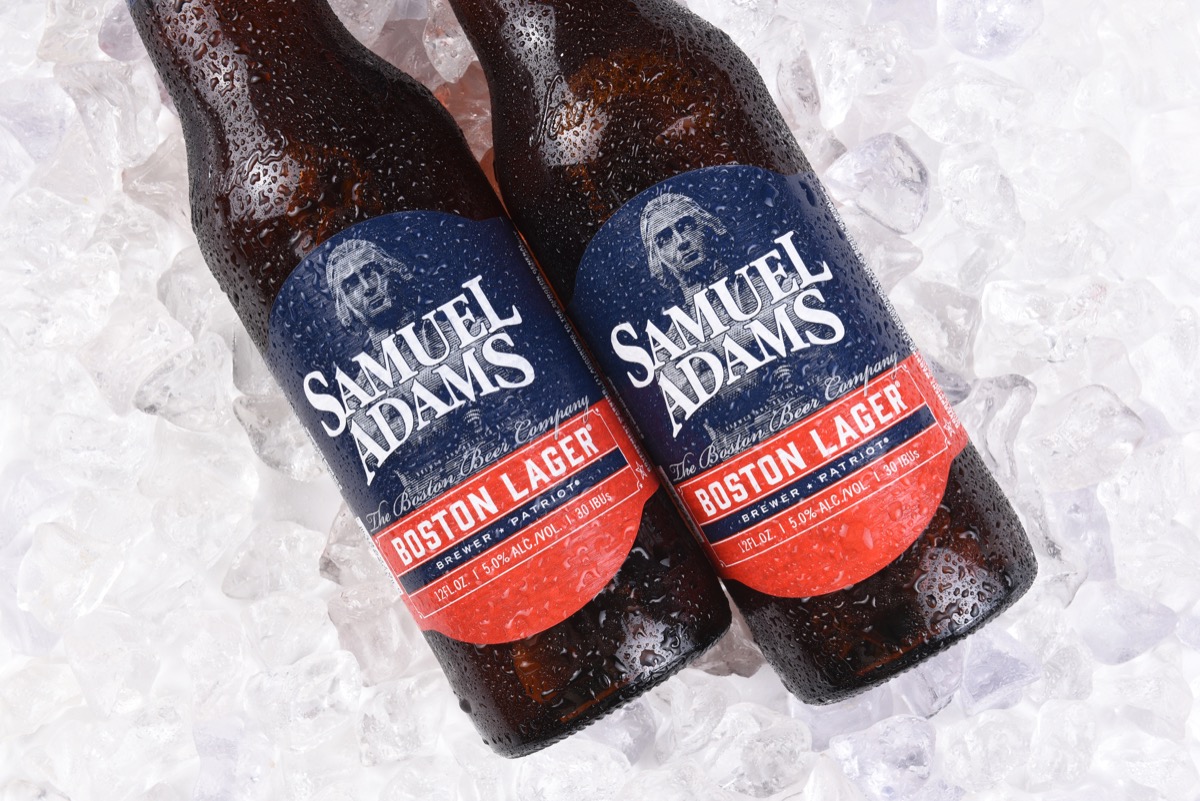
The craft beer industry in the U.S. produces nearly 26 million barrels of beer every year and is worth an estimated $27.6 billion. And the company that started it all is the Boston Beer Company, which was established in 1985. A year prior, founder Jim Koch discovered his great-great grandfather’s recipe for home-brewed lager in his father’s attic. Koch began brewing batches of it in his Boston kitchen and decided to sell it commercially under the name of his favorite founding father: Samuel Adams, whose family famously owned a malt house that produced the ingredient for beer brewing.
On Apr. 15, 1985—Patriots Day—Koch introduced his brew, Samuel Adams Boston Lager, to patrons at 30 Boston bars and restaurants. Because he didn’t have the funds to distribute it in kegs or cans, he sold it in loose bottles. Six weeks later, Samuel Adams Boston Lager won first place at the Great American Beer Festival in Denver. During his first year in business, Koch generated $120,000 in revenue. Now, the Boston Beer Company is the largest independently owned beer maker in the U.S., with more than 60 varieties of Samuel Adams beer and nearly $1 billion in annual revenue.